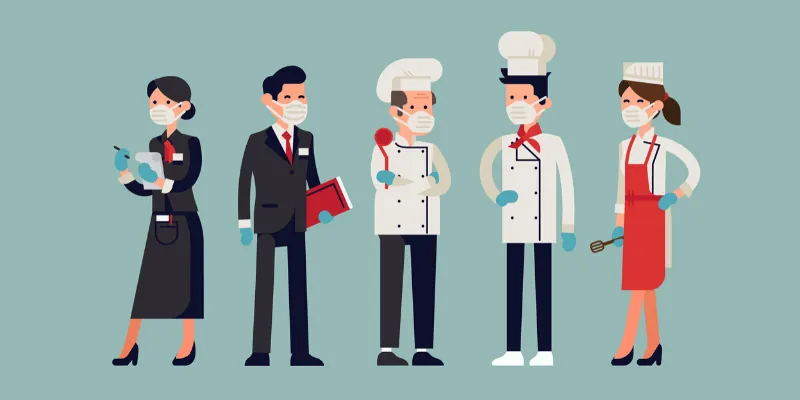Unlock 1.0: how the restaurant industry aims to revive
Food safety and hygiene should be the top priority for restaurants, along with transparency on how they are implementing sanitisation norms. Social distancing should also continue in restaurants.

A couple of months ago, who would have thought that masks would become a fashion statement? The world has changed rapidly in a short span of time, which means businesses across the board have to implement radical changes in the way they think and operate.
Other Asian countries like Thailand and Singapore have earlier been through an epidemic and have implemented various norms in public places to ensure health checks and safety. In India, however, there is need for a major shift in the way businesses are run - especially restaurants.
Food is a basic need. Dining out does not merely constitute an evening of not having to cook. It’s an experience, a meeting, a gathering of friends or families, a date.
COVID-19 has created a fear about having these experiences. Instead of asking ‘would I like the food here?’, we are now asking ‘is the food is safe here and what kind of sanitisation norms is the restaurant practising’.
As Unlock1.0 is announced, there are many measures that can help revive the restaurant industry.
Regaining customer’s confidence
We all have our favourite places to hang out for different occasions. This also means we are familiar with the place. However, COVID-19 has created a distrust about these very places. The first step to unlocking is to regain the customer’s confidence.
Food safety and hygiene should be the top priority for restaurants, along with transparency on how they are implementing sanitisation norms. Social distancing should continue in restaurants.
Cash is on its way out, replaced by a host of digital payments. Instead of serving staff, we might soon have robots serving food.
New trends
People will remain a little hesitant to re-live those pre-COVID-19 experiences. However, many choose to retain the experience of new cuisines or ordering out.
‘Grab and go’ has been a trend in several countries for some time. India, too, has been adopting this over the last few months. It works out as a quicker option, when you are on the move.
The trend will be amplified in the Unlock 1.0 phase, as people prefer to grab something outside but not necessarily want to spend time at a cafe or a restaurant.
Grab and go will also grow as an alternate option in India, as the patterns of working and the schedule of people is likely to change in the next few months.
Cloud kitchen is another concept which is going to leapfrog and come out as a winner. More investment is being planned in this space by restaurants.
New dining experience
People are not expected to head out to restaurants with lockdown and government’s norms still in place. However, when people eventually are confident to go back to restaurants, they will be faced with a new experience - from thermal screenings to sanitised tables to contactless ordering.
The seating arrangement might change in order to ensure social distancing. Restaurant staff might be masked and gloved. All possible measures should be taken to ensure that patrons can maintain safe distance. Of course, this means limited customers but restaurants will have to figure out other sources of revenue.
There are restaurants in other countries that are using empty tables as a showcase for artists to display their work. Some have converted tables into pods, which also provide additional privacy to the diners.
Hi-tech dining
The biggest change will be the way technology enters restaurants. Apps are in use to enable booking of tables and delivery of food. Serving staff of some restaurant chains use internal apps to place orders in the kitchen where diners can scan a QR code and access the menu to place the order from their phones.
They can also make the payments from the same platform. In the future, table-top self-service ordering devices may become more common.
The quality of service quality is crucial for any restaurant. Contactless service seems to be the in-thing in the near future.
Edited by Javed Gaihlot
(Disclaimer: The views and opinions expressed in this article are those of the author and do not necessarily reflect the views of YourStory.)









